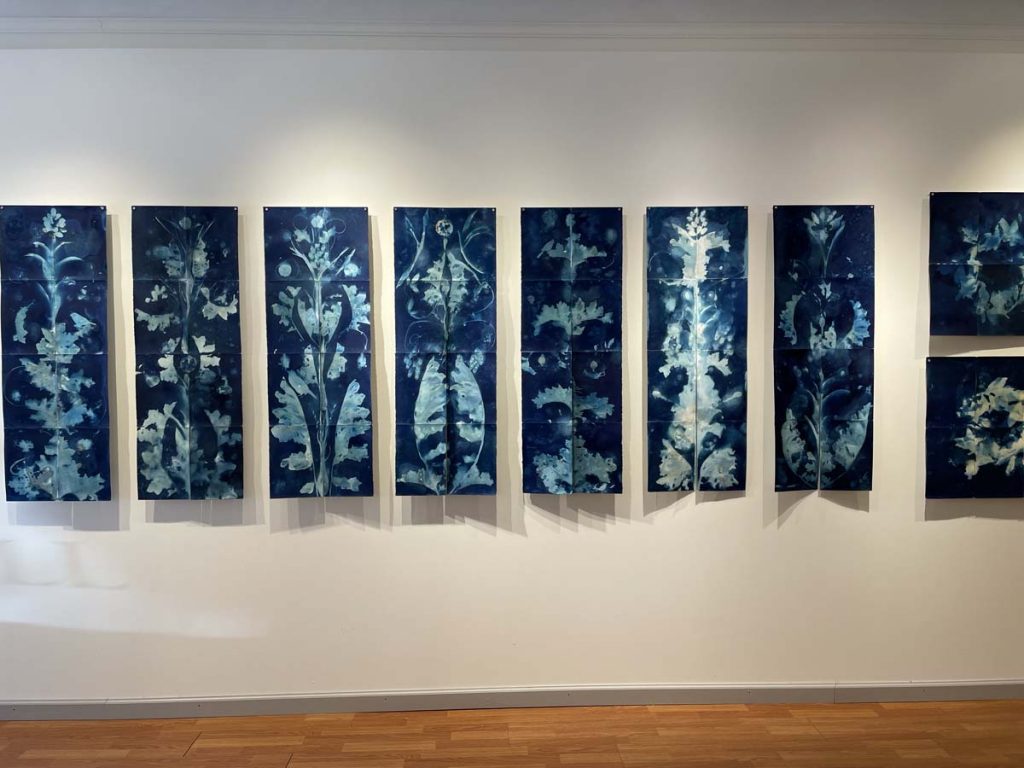
The images in Pax Anthropocene are inspired by the Ara Pacis, a monument to peace that was created by Caesar Augustus to designate the beginning of a new era of peace in the Roman Empire. Dedicated in 9 B.C.E., the Ara Pacis Augustae took the form of an open air altar that was decorated with deep reliefs carved into marble. The upper friezes depict a ritual procession showing Caesar Augustus and his family, government officials, and religious figures while the lower friezes are covered in stylized floral scrollwork that is usually interpreted as representing the abundance and fertility that peace would bring to the Empire.


The floral imagery, while highly stylized and fantastical, is also very detailed and numerous flora and fauna from the Mediterranean region have been identified by scholars.
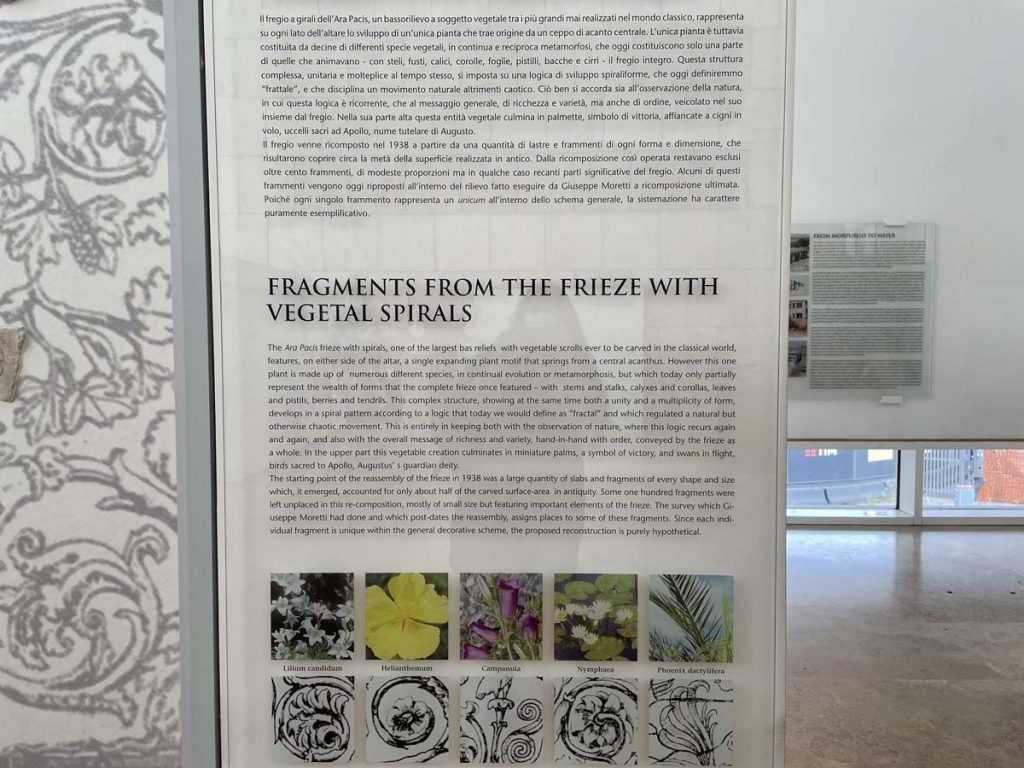
Finding the birds, lizards, scorpions, and various other animals and insects is an entertaining occupation when visiting the monument, which is located in a building designed by Richard Meier along the Trastevere River in Rome, Italy. The nest of baby birds threatened by a snake is a particularly whimsical little vignette.
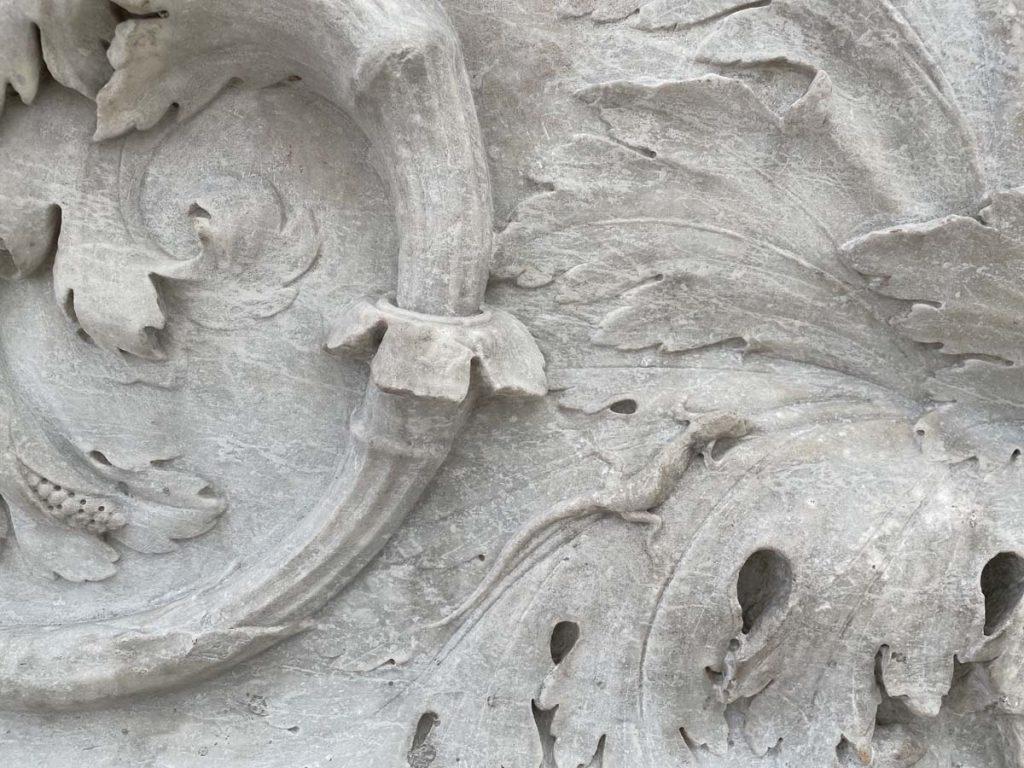
Lizard 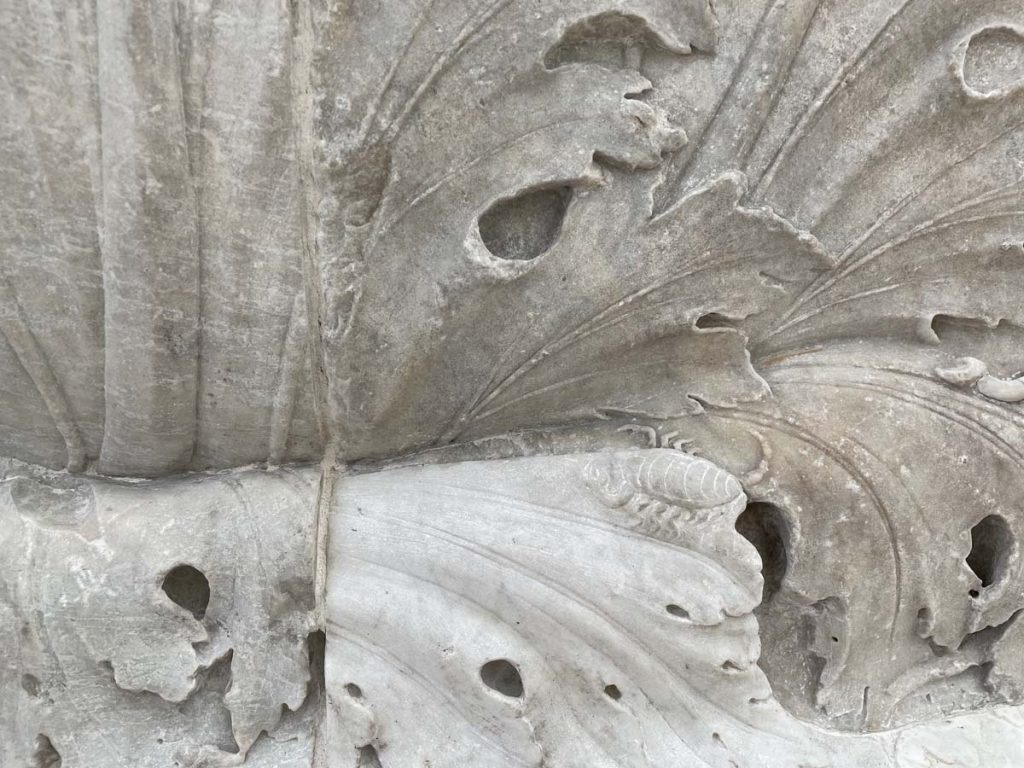
Scorpion hiding in Acanthus leaves. 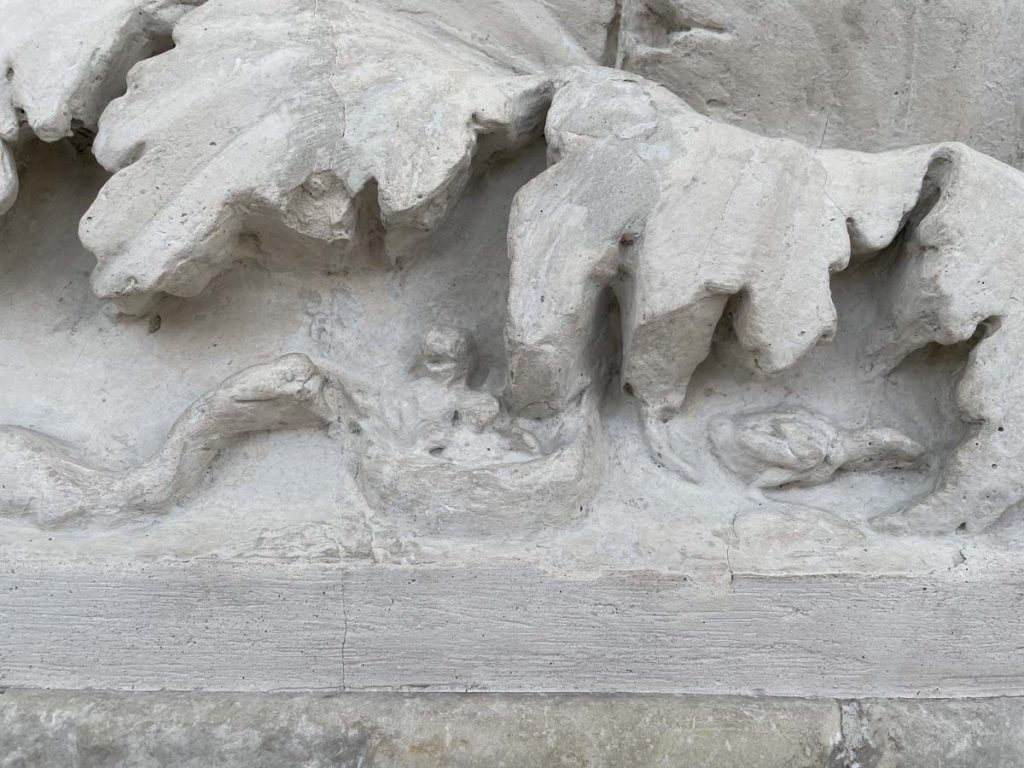
Snake and baby birds
Greek and Roman sculptors often modeled the vegetal decoration in their works after local species. Acanthus mollis is one of the most famous as the vegetation depicted in Corinthian columns.
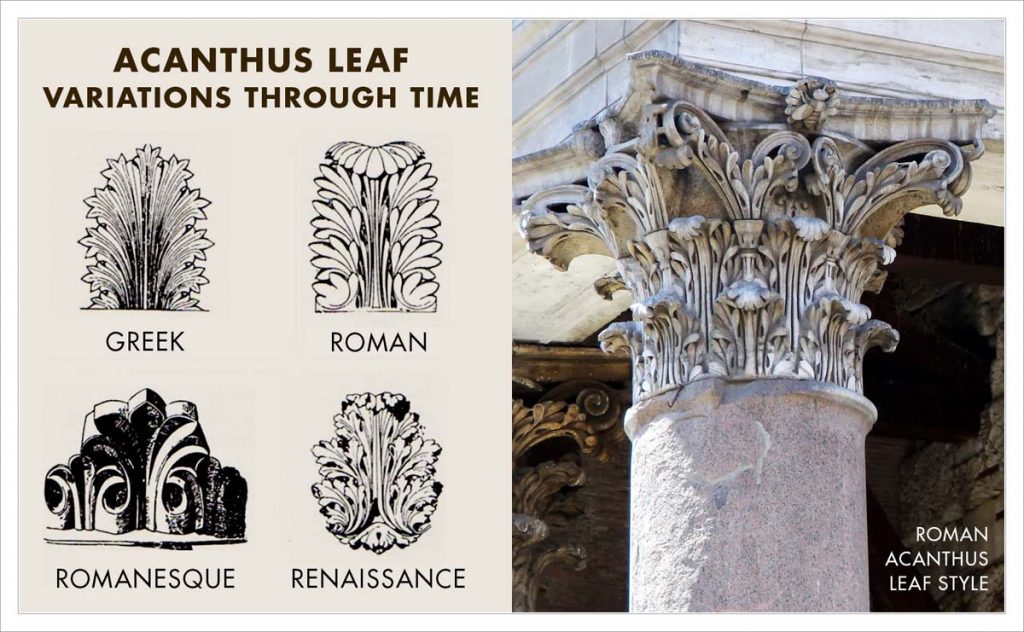
To make the Ara Pacis inspired cyanotypes, I collected local specimens on walks or from florists or produce sellers. I coated the paper with the UV-sensitive cyanotype solution, made arrangements on the paper, then exposed them in sunlight. The changing quality of the natural light, the different watercolor papers available locally, and the dissolved minerals in Rome’s water create some of the tonal variations in the prints.

Acanthus Mollis growing wild along sidewalks and pathways in my neighborhood in Rome. 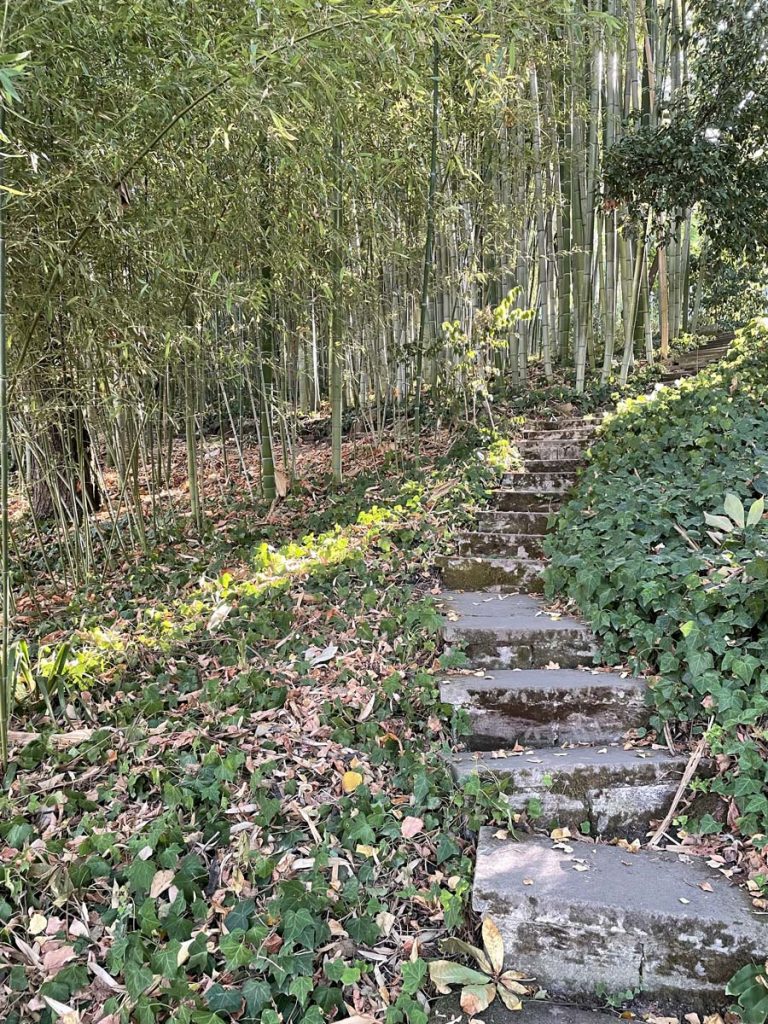
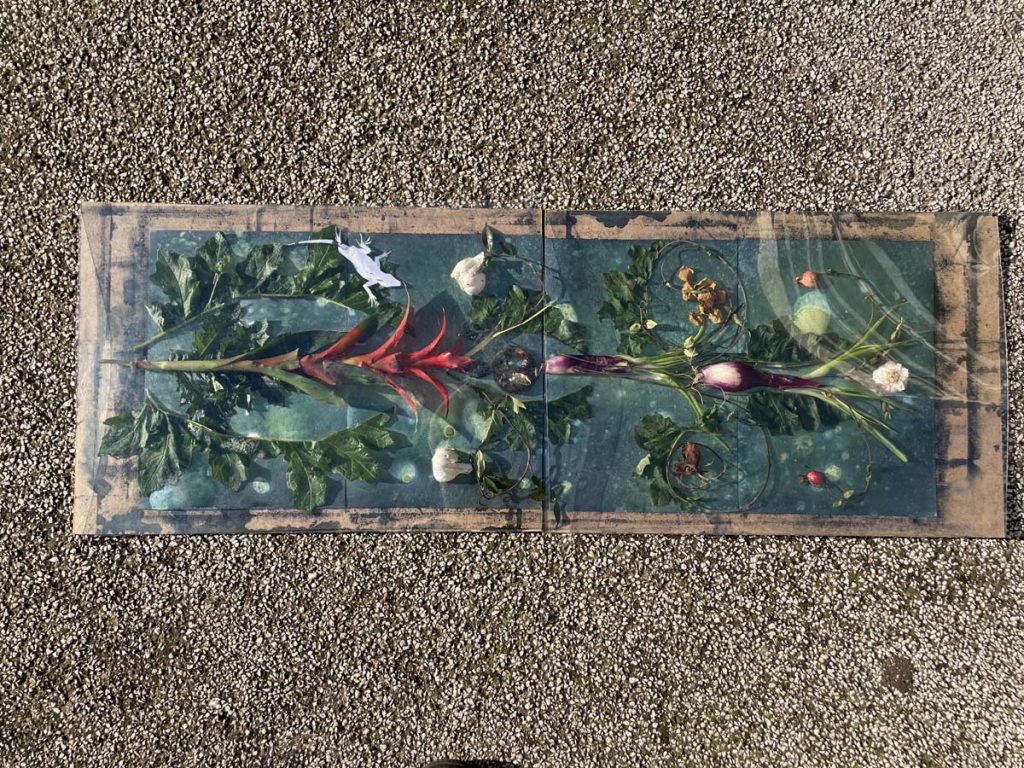
Making an exposure. 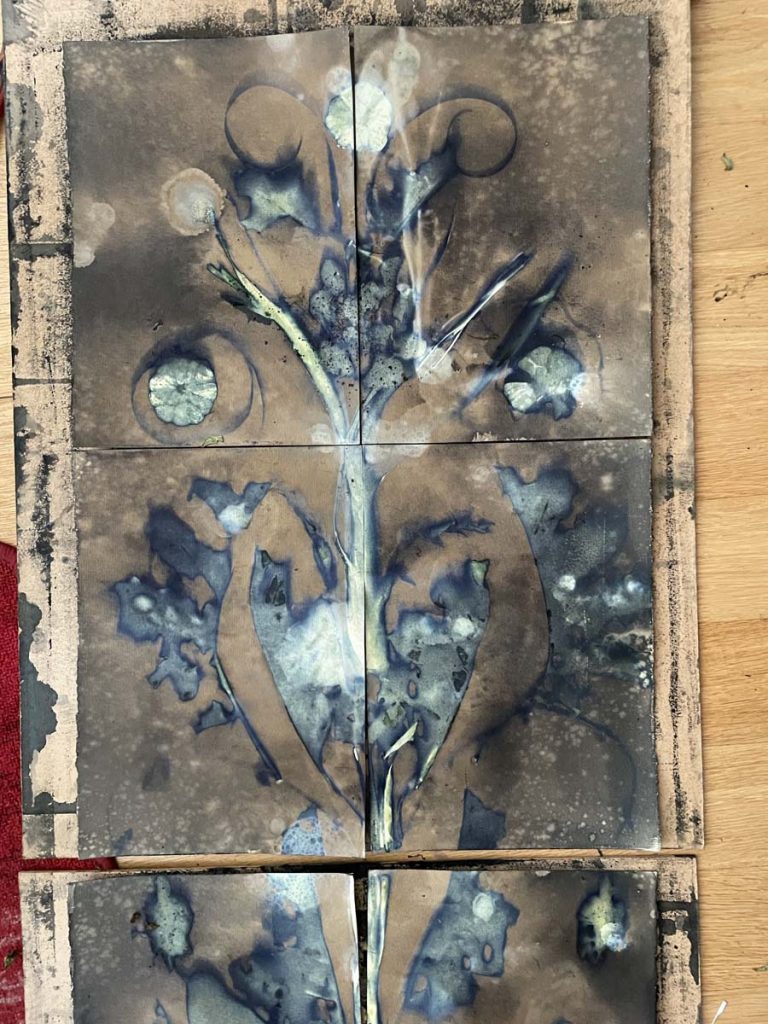
Exposed- before washing (#5) 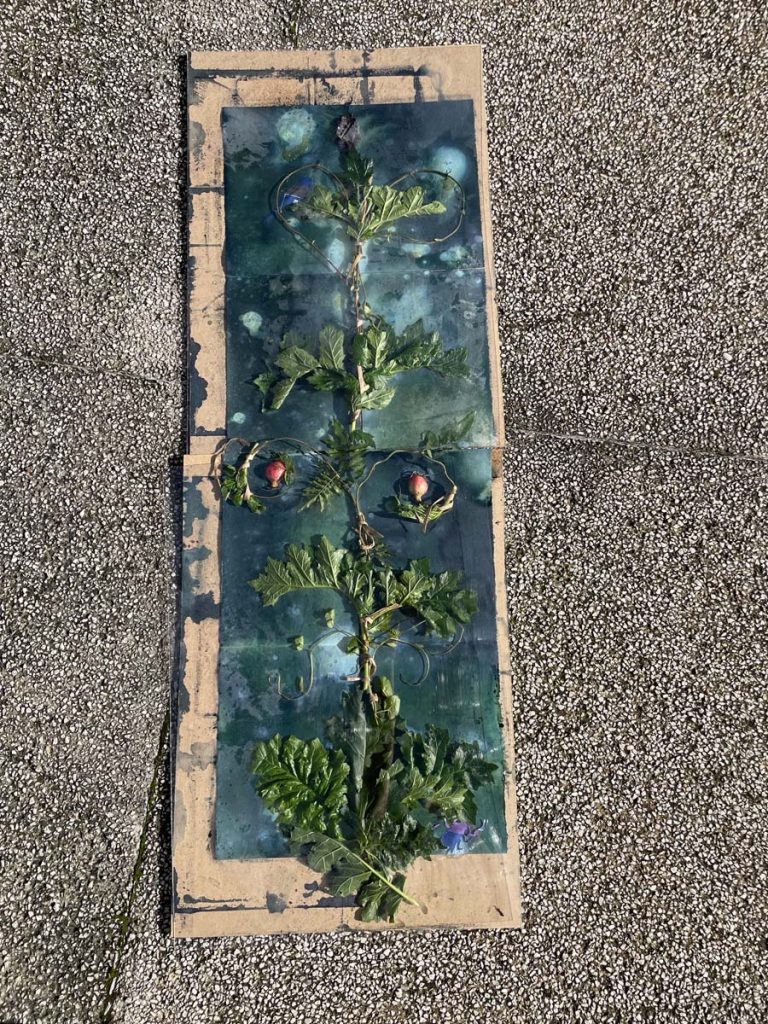
Exposing a print with miniature pomegranates and acanthus. 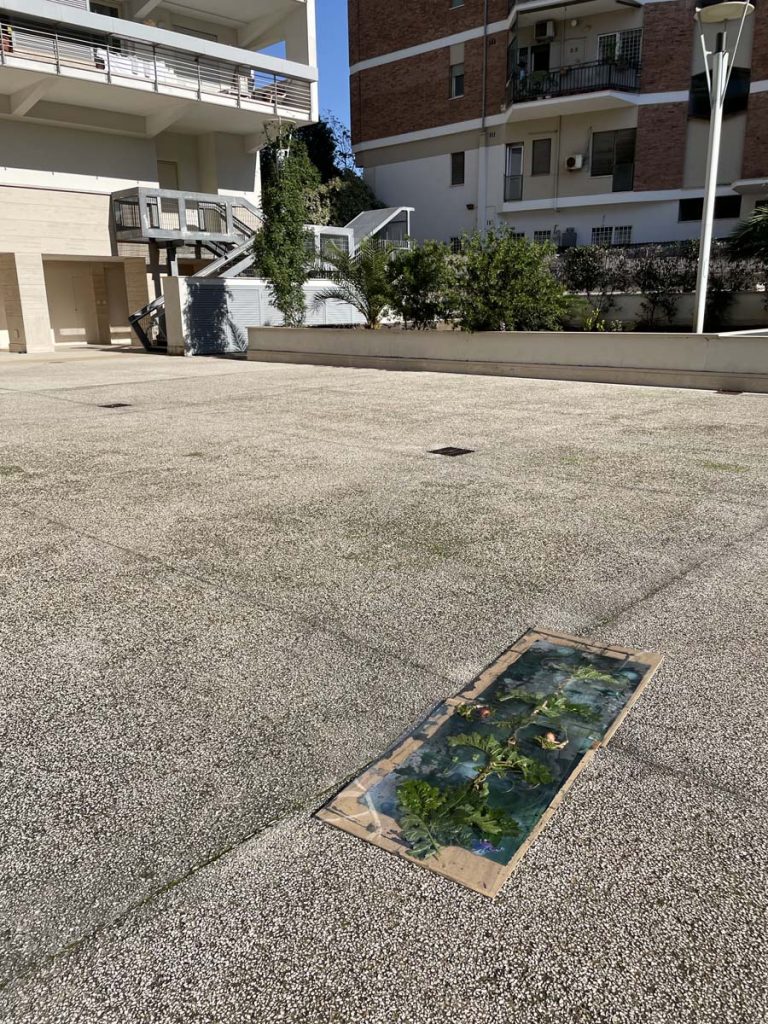
Exposing in the courtyard. 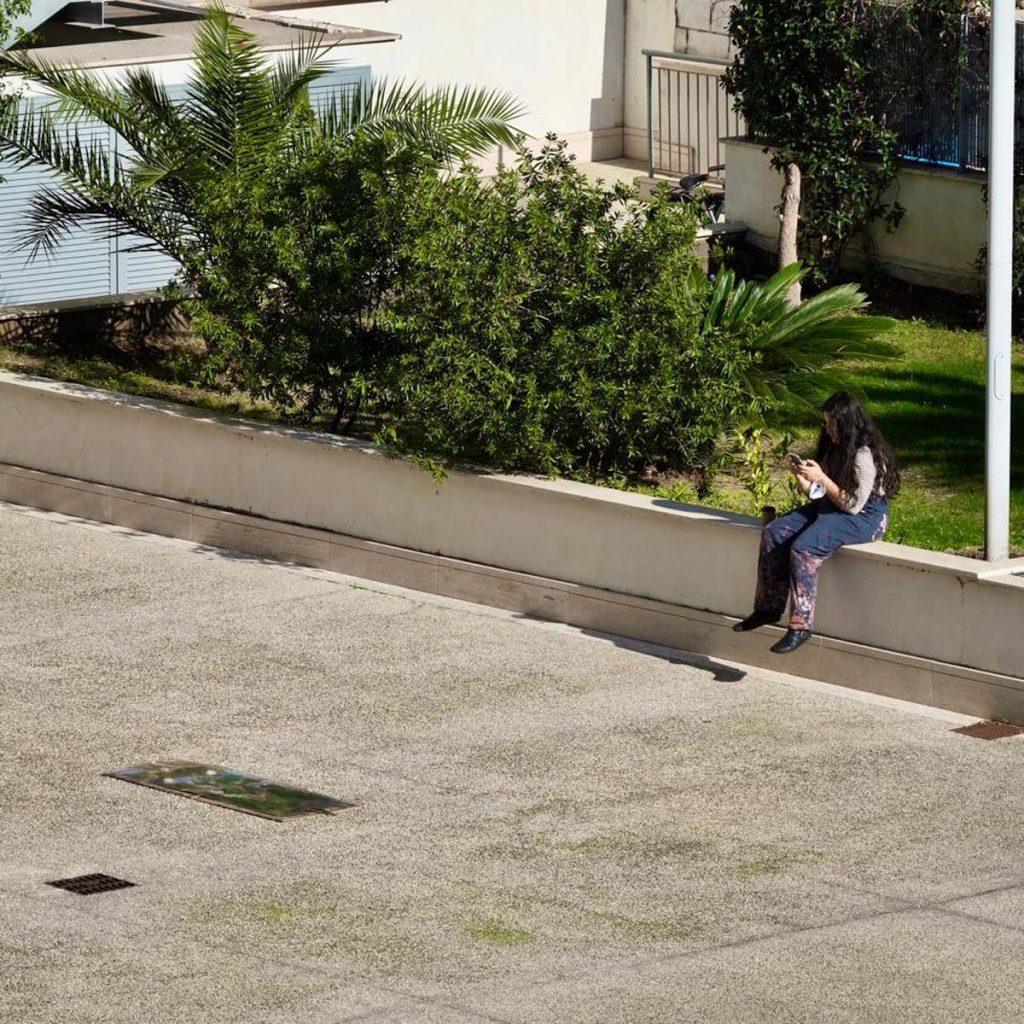
Waiting- exposures take anywhere from 30 minutes to several hours depending on the intensity of the sunlight. 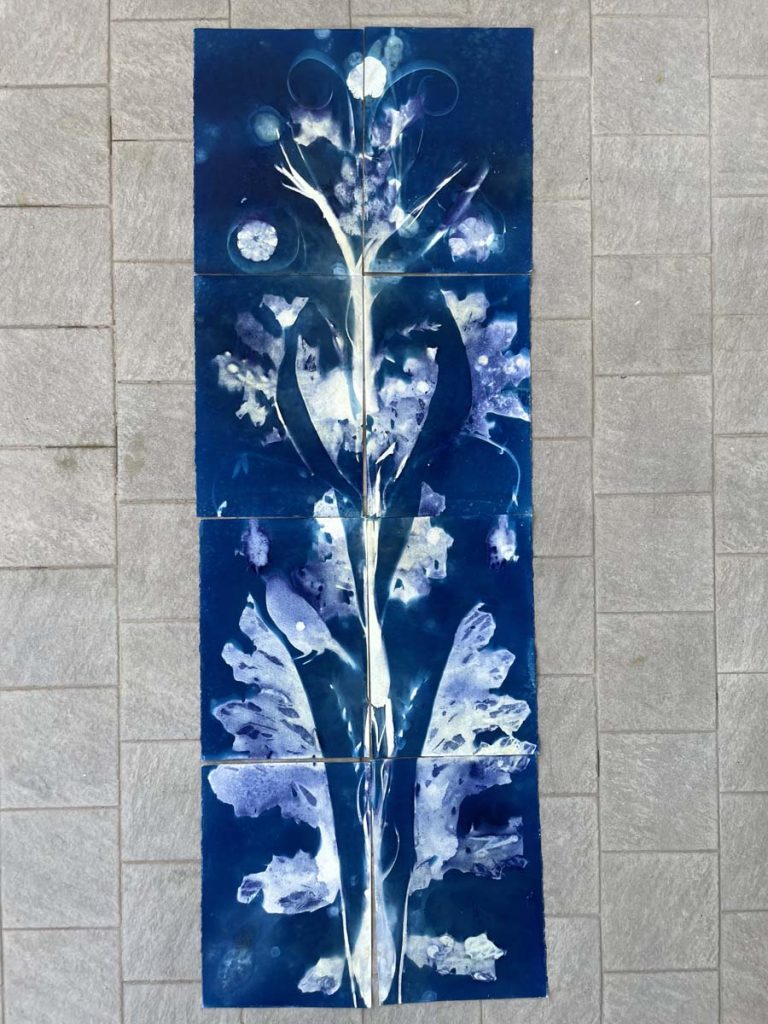
Washed and drying (#5).
In total I made seven unique Ara Pacis inspired compositions in Rome and these are vertical images in the Awakenings exhibition at State of the Art Gallery.
Why do I call the series Pax Anthropocene, you might ask? Well, the peace that Caesar Augustus proposed with the Ara Pacis monument is often called the Pax Augusta. Pax is “peace” in latin. The term “Anthropocene” is used by theorists to suggest the current age of human manipulation of the environment. Some place the starting date of the Anthropocene at the lowest point of carbon in the atmosphere, somewhere in the 1700s when colonization reduced human populations in the Americas but before the Industrial age.
The series title Pax Anthropocene is meant to invoke the idea of making peace with nature in our current era, which is in keeping with my recent work about climate change.
You can also see the entire series or my other work on my website.

What an edifying and inspiring description of your process and how these pieces came to be. I really appreciate your effort to add an historical context in terms of the art and environment. The prints are striking and interesting on their own, but understanding how and why they were produced adds a great deal more. I whimsically wondered whether you ever have to employ a scarecrow to protect the floral and vegetable elements during the exposure period. Stray dogs, cats, rodents and birds may do some rearranging or otherwise find themselves recorded for posterity.
I’m glad you enjoyed it. A scarecrow is an interesting idea! Usually I am exposing them during the brightest part of the day and keeping an eye on them, but I suppose that if I moved into yummier items then I might have to be a little more proactive.